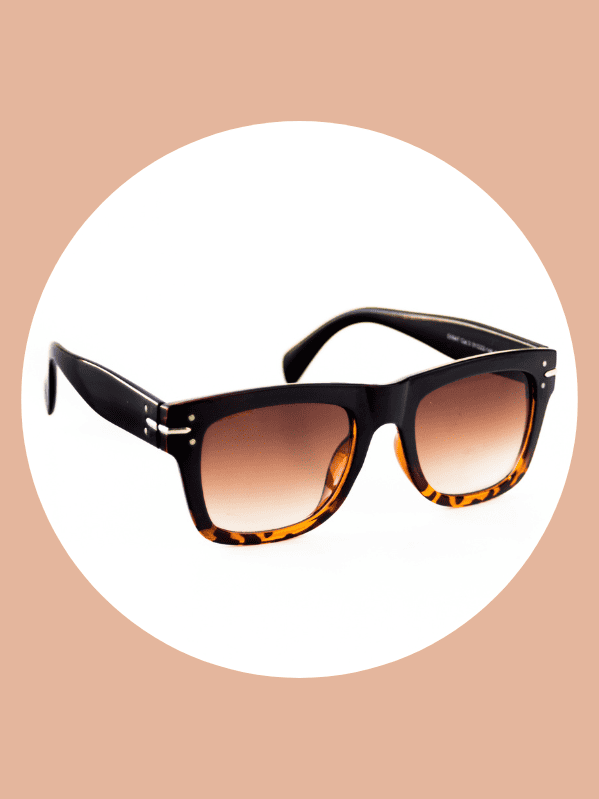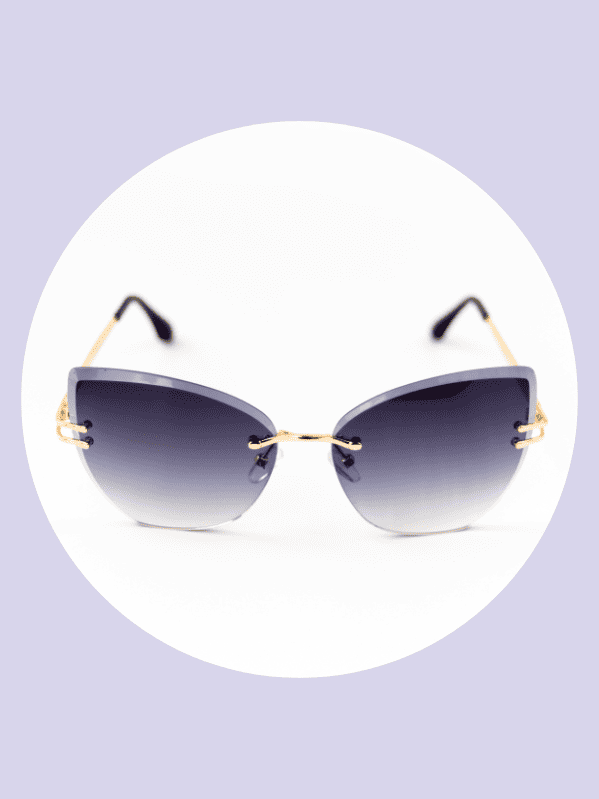If you’re the kind of person who can’t get enough of the great outdoors, whether it’s hiking, cycling, or riding the waves, you might be thinking, “Should I give gradient sunglasses a shot?”
These shades aren’t just about looking cool (though they do that too). They’re all about leveling up your vision game!
Let’s take a closer look at what gradient exactly means for sunglasses lenses and find out why they’re a game-changer and the best choice for your outdoor fun.
What is Gradient Tinting?
Gradient tinting, sometimes called single or double gradient, refers to the darkness or lightness of the lens tint gradually changing from the top of the lens to the bottom.
On a standard lens, the tint is uniform across the entire lens.
But with gradient lenses, the top portion is a darker tint to block harsh glare, while the bottom is a lighter shade to allow more visible light in.

This mimics how the human eye naturally adjusts to different light levels by dilating and constricting the pupil.
Gradient lenses aim to replicate this optical process without placing as much strain on the eyes.
The smooth transition from light to dark tint provides a more comfortable viewing experience in a wide variety of lighting conditions, from bright sunlight to shaded low light.
Main Benefits of Gradient Sunglasses
Some key advantages of choosing gradient sunglasses include:
Reduced Eye Fatigue
Because the lenses gradually change tint, the eyes don’t have to work as hard adjusting between different light levels.
This places less stress on the eyes and helps prevent eye strain over longer periods of outdoor activities.
Improved Depth Perception
With gradient lenses, the top is darker in shade, which helps to reduce overhead glare and provide better visibility of details and shadows above you.
The lighter bottom portion is designed to block lower glare from reflective surfaces like water or snow.
Versatility
The gradient effect makes these lenses highly usable in a mix of lighting situations without needing to change pairs.
Whether you’re playing a round of golf on a sunny day or hiking in a wooded trail with patches of overhead sunlight, one pair of gradient glasses can handle it all.
Natural Appearance
Many people feel gradient lenses look more natural than a uniform dark tint since they mimic how the eye perceives light.
Some may also appreciate the fashionable two-tone effect.
Lens Materials and Degree of Gradient
Gradient lenses are available using different lens materials like polycarbonate or metal oxide, each with their own benefits.
Polycarbonate provides shatter resistance ideal for outdoor sports while retaining clarity.
Metal oxide lenses filter out more visible light for maximum protection.
The degree of gradient can also vary – some have a very subtle shading effect while others have a more dramatic difference between the top darker and bottom lighter shades.

Be sure to try different styles on to see which level of gradient works best for your specific needs and preferred activities in sun or shade.
Darker lenses may suit bright alpine conditions better than lighter gradient lenses.
An important consideration is how the lens tint impacts color perception.
Lenses with a strong brown or green tint can distort vibrant colors, though polarized options help correct this.
A well-chosen lens material and subtle gradient effect can maintain natural color clarity while still blocking glare.
Consult an optician to find the right balance.
Double Gradient and Polarized Options
For extra comfort in really bright light, consider double gradient sunglasses.
These feature a gradient effect across both the top and bottom portions of the lens for a smooth transition from light to medium to dark.
Double gradient lenses are a great choice for water sports on sunny days when reflected light comes from all angles.
Polarized gradient lenses deserve special mention as a top option.
Polarization filters out horizontal glare on flat surfaces like water so you get maximum clarity.
The gradient tint then provides an ideal balance of light transmission and protection overhead and below.
Look for polarized polycarbonate or CR-39 plastic for the best combination of shatter resistance and optical clarity.
Choosing the Perfect Pair
With so many gradient, material, and lens color options to consider, selecting the right sunglasses takes some trial and error. Make sure to factor in:
– Intended activities in weather conditions like sunny, cloudy, or shaded areas
– Personal style and frame shape that flatters your face shape (there are a lot of different colors and styles to choose)
– Lens color preferences to suit your complexion
– Budget and any coupons or discounts

Trying on different styles allows you to see how various tints impact color perception and compare light transmission levels.
An optician can also recommend the best gradient level and lens material according to factors like prescription needs, typical lighting environments, and protection from UV and blue light.
With the right pair, gradient sunglasses provide versatile eyewear that looks good and maximizes comfort during outdoor sports and everyday use.
In conclusion, gradient lenses are a popular choice as they smoothly transition from dark to light tints along the lens for a natural viewing experience and reduced eye strain compared to standard lens tints.
Whether you need sunglasses for water sports, hiking trails, or sunny weekend activities, gradient glasses can offer an ideal combination of vision, style and protection from the sun (that is, if you choose glasses with proper UV protection).

